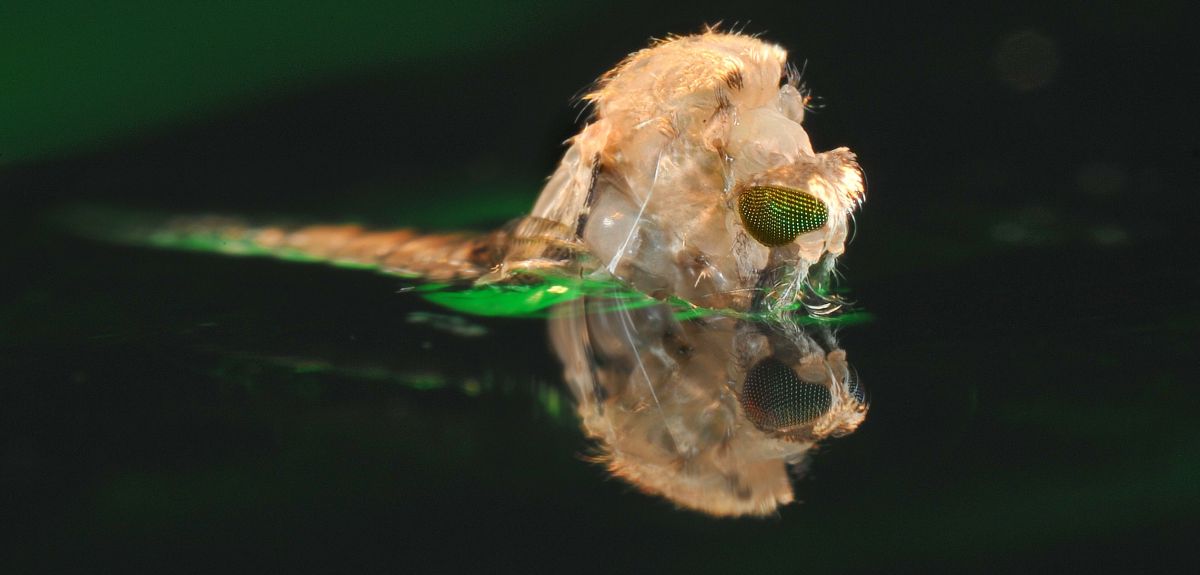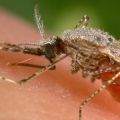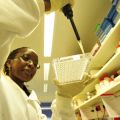
Image credit: CDC/James Gathany
Drug-resistant malaria close to border with India
Resistance to the antimalarial drug artemisinin is established in Myanmar and has reached within 25 kilometres of the Indian border, a study involving Oxford University researchers has found.
Resistance to the antimalarial drug artemisinin is established in Myanmar and has reached within 25 kilometres of the Indian border, a study involving Oxford University researchers has found.
The study, published in Lancet Infectious Diseases, suggests that artemisinin resistance threatens to follow the same historical trajectory from Southeast Asia to the Indian subcontinent as seen in the past with other antimalarial medicines.
The spread of malaria parasites that are resistant to the drug artemisinin – the frontline treatment against malaria infection – into neighbouring India would pose a serious threat to the global control and eradication of malaria. Millions of lives may potentially be at risk if drug resistance spreads from Asia to the African sub-continent, or emerges in Africa independently, as has happened several times before.
Mapping the spread of resistance, together with a more systematic review and revision of medicine dosing strategies (especially for vulnerable groups such as children and pregnant women) will help to preserve and prolong the life-span of these life-saving medicines.
The collection of samples from across Myanmar and its border regions was led by Dr Kyaw Myo Tun of the Defence Services Medical Research Centre, Napyitaw, Myanmar and coordinated by the Mahidol-Oxford Tropical Medicine Research Unit (MORU) in Bangkok, Thailand.
MORU is a research collaboration between Mahidol University in Thailand and Oxford University and the Wellcome Trust in the UK.
The researchers examined whether Plasmodium falciparum malaria parasite samples collected at 55 malaria treatment centres across Myanmar carried mutations in specific regions of the parasite’s kelch gene (K13) – a known genetic marker of artemisinin drug resistance. The team confirmed resistant parasites in Homalin, Sagaing region of Myanmar. This area is located only 25km from the Indian border.
'Myanmar is considered the frontline in the battle against artemisinin resistance as it forms a gateway for resistance to spread to the rest of the world,' says study author Dr Charles Woodrow from the Mahidol-Oxford Tropical Medicine Research Unit and Oxford University. 'With artemisinins we are in the unusual position of having molecular markers for resistance before resistance has spread globally. The more we understand about the current situation in the border regions, the better prepared we are to adapt and implement strategies to overcome the spread of further drug resistance.'
The team obtained the DNA sequences of 940 samples of malaria infections from across Myanmar and neighbouring border regions in Thailand and Bangladesh between 2013 and 2014. Of those 940 samples, 371 (39%) carried a resistance-conferring K13 mutation.
'We were able to gather patient samples rapidly across Myanmar, sometimes using discarded malaria blood diagnostic tests and then test these immediately for the K13 marker, and so generate real-time information on the spread of resistance,' said Dr Mallika Imwong, research lead for the laboratory analysis at Mahidol University’s Faculty of Tropical Medicine in Bangkok, Thailand. Gathering near 'real-time' information on malaria drug resistance is critical to help predict the geographic routes of drug resistance and inform national and regional patient treatment strategies.
Using this information, the researchers developed maps to display the predicted extent of artemisinin resistance determined by the prevalence of K13 mutations. The maps suggest that the overall prevalence of K13 mutations was greater than ten per cent in large areas of the East and North of Myanmar, including areas close to the border with India.
'The identification of the K13 markers of resistance has transformed our ability to monitor the spread and emergence of artemisinin resistance,' says Professor Philippe Guerin, Director of the Worldwide Antimalarial Resistance Network (WWARN) and co-author of the study. 'However, this study highlights that the pace at which artemisinin resistance is spreading or emerging is alarming. We need a more vigorous international effort to address this issue in border regions.'
Professor Mike Turner, Head of Infection & Immunobiology at the Wellcome Trust, said 'Drug resistant malaria parasites in the 1960s originated in Southeast Asia and from there spread through Myanmar to India, and then to the rest of the world where it killed millions of people. The new research shows that history is repeating itself with parasites resistant to artemisinin drugs, the mainstay of modern malaria treatment, now widespread in Myanmar. We are facing the imminent threat of resistance spreading into India, with thousands of lives at risk.'
This research was funded with the support of the Bill & Melinda Gates Foundation, the Wellcome Trust and the ExxonMobil Foundation.
A report of this research, entitled 'Spread of artemisinin-resistant Plasmodium falciparum in Myanmar: a cross-sectional survey of the K13 molecular marker', is published in the Lancet Infectious Diseases.
 Expert Comment: Chatbot-driven sexual abuse? The Grok case is just the tip of the iceberg
Expert Comment: Chatbot-driven sexual abuse? The Grok case is just the tip of the iceberg
 New study finds that stopping weight-loss drugs is linked to faster regain than ending diet programmes
New study finds that stopping weight-loss drugs is linked to faster regain than ending diet programmes
 A combination of genes results in malaria drug resistance
A combination of genes results in malaria drug resistance
 Genetic insights into our evolutionary battle with malaria
Genetic insights into our evolutionary battle with malaria Promising results in efforts to develop new malaria treatments
Promising results in efforts to develop new malaria treatments